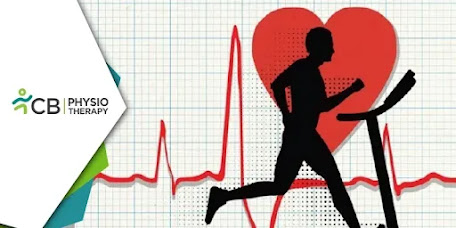Starting your day with the right physiotherapy exercises can set the tone for a productive and energetic day. Morning exercises not only help in improving flexibility, posture, and strength but also boost circulation, reduce stiffness, and promote mental well-being. Here are five physiotherapy-approved morning exercises that will keep you energized all day long.
5 Morning Physiotherapy Exercises to Kickstart Your Day
1. Cat-Cow Stretch (Spinal Mobility & Flexibility) Why It’s Important?
The cat-cow stretch is a dynamic movement that helps in spinal mobility, relieves stiffness and improves circulation to the back and core muscles. It enhances flexibility and promotes better posture, making it an excellent morning exercise.
How to Do It?
· Start on your hands and knees in a tabletop position.
· Inhale as you drop your belly towards the floor, lifting your head and tailbone (Cow Pose).
· Exhale as you round your back, tucking your chin towards your chest (Cat Pose).
· Repeat this movement for 10–15 repetitions in a slow and controlled manner.
Benefits
· Enhances spinal mobility and flexibility.
· Reduces stiffness and back pain.
· Improves breathing and relaxation.
2. Glute Bridges (Core & Lower Back Strengthening) Why It’s Important?
Glute bridges activate the gluteal muscles, lower back, and core. This exercise helps stabilize the pelvis and reduce lower back pain while improving overall strength.
How to Do It?
· Lie on your back with your knees bent and feet flat on the floor, hip-width apart.
· Engage your core and squeeze your glutes as you lift your hips towards the ceiling.
· Hold for a few seconds, then slowly lower back down.
· Perform 12–15 repetitions.
Benefits
· Strengthens the core and lower back.
· Improves pelvic stability and posture.
· Boosts circulation and activates the posterior chain muscles.
3. Shoulder Rolls (Neck & Shoulder Mobility) Why It’s Important?
Morning stiffness often affects the neck and shoulders, especially for those who sleep in awkward positions. Shoulder rolls help release tension, improve mobility, and enhance circulation in the upper body.
How to Do It?
· Sit or stand with a straight back.
· Slowly roll your shoulders forward in a circular motion for 10 reps.
· Reverse the direction and roll them backward for another 10 reps.
Benefits
· Reduces shoulder and neck stiffness.
· Improves blood circulation to the upper body.
· Enhances posture and reduces muscle tightness.
4. Standing Quadriceps Stretch (Leg Muscle Activation) Why It’s Important?
The quadriceps muscles play a crucial role in walking, running, and maintaining balance. Stretching them in the morning prevents tightness and enhances movement efficiency throughout the day.
How to Do It?
· Stand tall and hold onto a stable surface if needed for balance.
· Bend your right knee and bring your heel towards your glutes, grabbing your ankle with your right hand.
· Keep your knees close together and hold the stretch for 20–30 seconds.
· Switch to the left leg and repeat.
Benefits
· Prevents muscle stiffness and injury.
· Improves flexibility and mobility.
· Enhances lower limb circulation and function.
5. Seated Forward Bend (Hamstring & Lower Back Stretch) Why It’s Important?
A tight hamstring and lower back can lead to discomfort and poor posture. The seated forward bend helps in stretching the hamstrings, calves, and spine, promoting relaxation and flexibility.
How to Do It?
· Sit on the floor with your legs extended straight in front of you.
· Slowly reach forward, keeping your back straight, and try to touch your toes.
· Hold the stretch for 20–30 seconds without bouncing.
· Release and repeat 2–3 times.
Benefits
· Reduces lower back tension and stiffness.
· Improves hamstring flexibility and posture.
· Promotes relaxation and better circulation.
Incorporating these simple physiotherapy exercises into your morning routine can make a significant difference in your energy levels, mobility, and overall well-being. By dedicating just 10–15 minutes each morning, you can enhance your posture, reduce stiffness, and start your day feeling refreshed and revitalized. Make these exercises a habit and enjoy a more active and energetic lifestyle!





